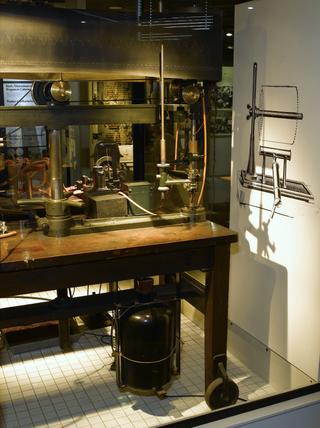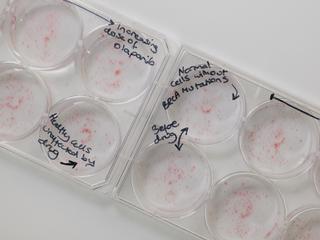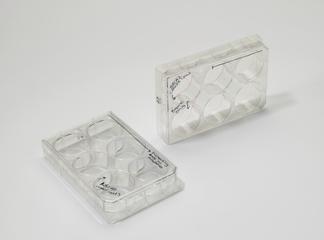

Crookes tube, for the study of cathode rays
During the late 1870s, Sir William Crookes (1832-1919) studied the effects of passing electricity through partially evacuated tubes like this one. Rays emitted from the cathode, which is an aluminium disc in this tube. Crookes was interested in studying the cathode rays. These cathode rays were later shown to be comprised of electrons.
Wilhelm Röntgen discovered X-rays by accident in 1895 while working with a Crookes tubes. He observed they were emitted when the cathode rays struck the glass.
Details
- Category:
- Laboratory Medicine
- Collection:
- Sir Henry Wellcome's Museum Collection
- Object Number:
- A629130
- Materials:
- tube, glass, cathode, aluminium and anode, aluminium
- Measurements:
-
overall: 61 mm x 175 mm 0.42kg
- type:
- x-ray tube
- credit:
- Wellcome Trust (Purchased from Stevens)




